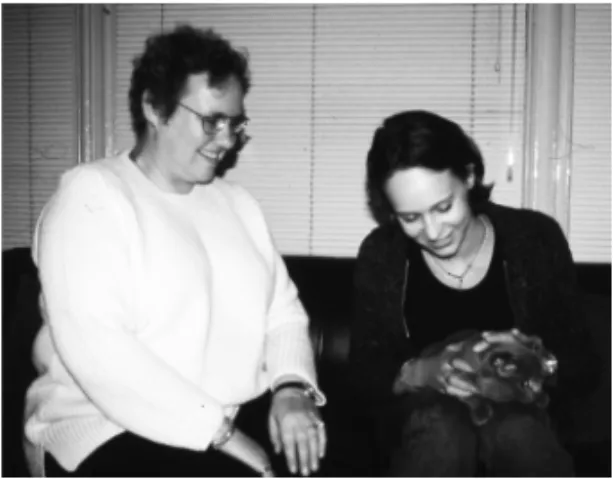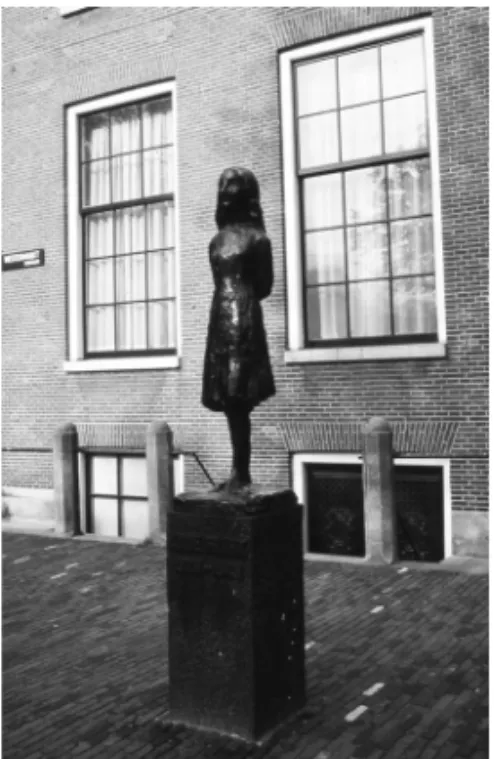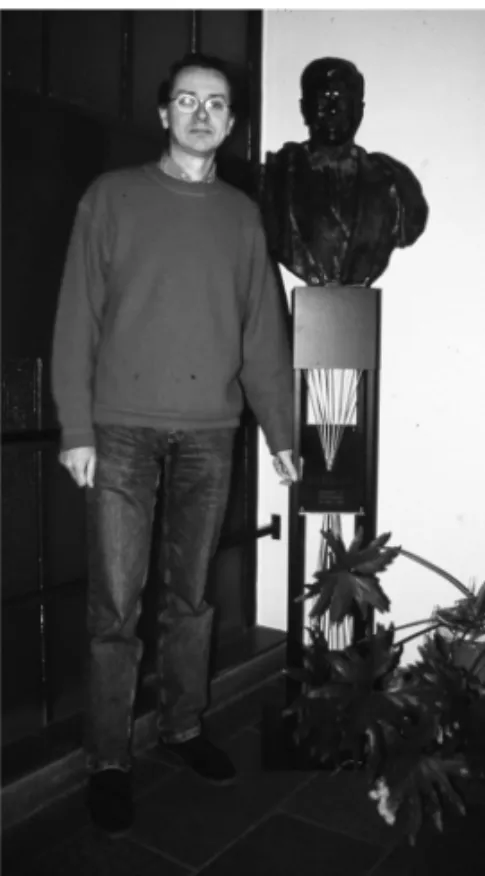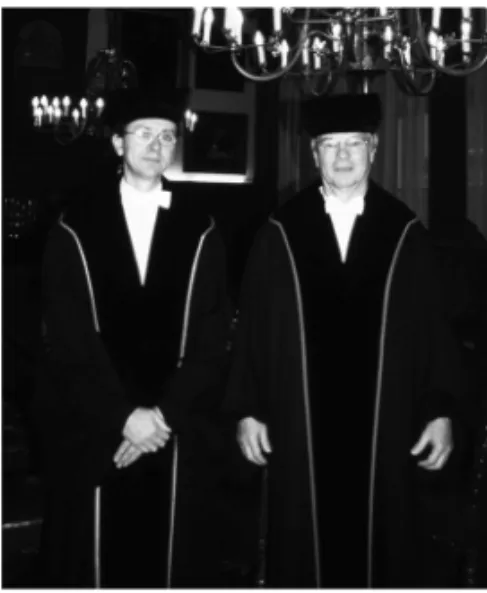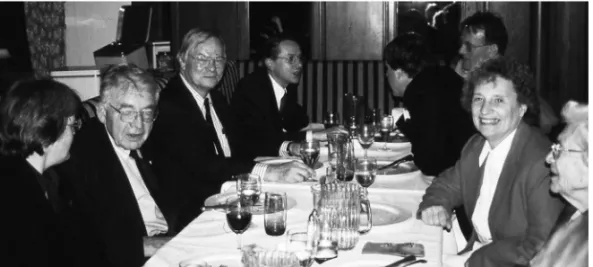Physics as a Calling,
Science for Society
Studies in Honour of A.J. Kox
Edited by
Ad Maas and Henriëtte Schatz
The publication of this book has been made possible by grants from the Institute for Theoretical Physics of the University of Amsterdam, Stichting Pieter Zeeman-fonds, Stichting Physica and the Einstein Papers Project at the California Institute of Technology.
Leiden University Press English-language titles are distributed in the US and Canada by the University of Chicago Press.
Cover illustration: Albert Einstein and Hendrik Antoon Lorentz, photographed by Paul Ehrenfest in front of his home in Leiden in 1921. Source: Museum Boerhaave, Leiden.
Cover design: Sander Pinkse Boekproducties Layout: JAPES, Amsterdam
ISBN 978 90 8728 198 4
e-ISBN 978 94 0060 156 7 (pdf) e-ISBN 978 94 0060 157 4 (e-pub)
NUR 680
© A. Maas, H. Schatz / Leiden University Press, 2013
Contents
Preface 7
Kareljan Schoutens
Introduction 9
1 Astronomers and the making of modern physics 15 Frans van Lunteren
2 The drag coefficient from Fresnel to Laue 47 Michel Janssen
3 The origins of the Korteweg-De Vries equation:
Collaboration between Korteweg and De Vries 61 Bastiaan Willink
4 A note on Einstein’sScratch Notebook of 1910-1913 81 Diana K. Buchwald, Jürgen Renn and Robert Schlögl
5 The reception of relativity in the Netherlands 89 Jip van Besouw and Jeroen van Dongen
6 ‘Our stomachs can’t wait that long’:
E.C. van Leersum and the rise of applied nutrition research in
the Netherlands 111
Pim Huijnen
7 Ernst Laqueur (1880-1947):
The career of an outsider 131
Peter Jan Knegtmans
8 Much ado about cold:
Leiden’s resistance to the International Temperature Scale of 1927 141 Dirk van Delft
9 The magnet and the cold:
Wander de Haas and the burden of being Kamerlingh Onnes’
successor 163
10. ‘The search for a black cat in an unlit room, where there is no cat at all’:
Investigation by the Royal Netherlands Academy of Sciences into
dowsing and earth rays 179
Jan Guichelaar
11 Amsterdam memories 199
Roger H. Stuewer
About the authors 207
Index 211
Colour insert: Material heritage of Dutch science between 1850 and 1950:
11 Amsterdam memories
Roger H. Stuewer
Anne Kox invited me to be the third Pieter Zeeman Visiting Professor of the His-tory of Modern Physics at the University of Amsterdam, in succession to Martin J. Klein and Peter M. Harman, for the months of October and November of 1998. I was honoured and delighted to accept Anne’s invitation, which I was able to do because I was then in the middle of a five-year phased-retirement arrangement, so I could be away from the University of Minnesota for those two months.
I arrived at Schiphol airport in the early morning of Friday, 2 October, where Anne met me, drove me in his car to the apartment on the Quellijnstraat (close to the Heineken brewery) that he had arranged for me, and helped muscle my two heavy bags (filled mostly with books) three stories up a narrow staircase to the apartment, which left both of us panting for breath. That, however, did not pre-vent Anne from inviting me for dinner that evening with his wife Henriette Schatz and their daughter Laura at their house on the Valeriusstraat. No one could have experienced a warmer and more gracious introduction to Amsterdam than I did.
I felt immediately at home at the University of Amsterdam, because both Anne and I, as historians of physics, had essentially identical academic appointments, he in Amsterdam’s Institute for Theoretical Physics and I in Minnesota’s School of Physics and Astronomy. Moreover, it was immediately obvious to me that San-der Bais, Director of the Institute, was providing Anne the same strong profes-sional and intellectual support that Morton Hamermesh, Head of our School of Physics and Astronomy, and his successors were providing me. This extended to Anne’s and my other colleagues, and to our secretaries, who joined in creating for us a wonderfully warm and welcoming departmental atmosphere.
Fig. 1–The beautiful purebred British Blue cat Dorus
On Saturday, 8 November, my wife Helga joined me in Amsterdam, so on the following Monday evenings both she and I now enjoyed Anne and Henriette’s gracious hospitality. They treated us royally: Before dinner, over several rounds of chilled Jenever, we learned of Laura’s love of polar bear pictures, and we were nuzzled by their beautiful British Blue cat Dorus (figures 1 and 2). Further enjoy-able conversation and warm companionship followed during a splendid dinner and excellent wine. Much later, our hearts melted when Anne told us that Dorus had got into a fierce fight outdoors and had developed an abscess that required lancing and some twenty stitches to repair.
Fig. 2– Henriette and Laura holding Dorus
His-torical Museum, the unforgettable Anne Frank House (figure 3), the fabulous Vincent van Gogh Museum, the moving Jewish Historical Museum, the extraor-dinary Rijksmuseum, and the beautiful Maritime Museum. Later, we toured the historic seventeenth-century canal houses, including the clandestine Church of Our Lord in the Attic (Ons’Lieve Heer op Solder), the Amstelkring Museum, the Rem-brandt House where the artist lived and worked from 1639 to 1658, the Willet-Holthuysen House, the Van Loon House, and the Biblical and Theatre Museums. Still later, Anne took me to the Holland Theatre (Hollandsche Schouwburg), site of never-to-be-forgotten tragedy: In 1942-1943 Amsterdam’s Jews (among them Anne Frank) were assembled there for transportation to Westerbork for further deportation to Auschwitz and other extermination camps. One who survived in hiding in Amsterdam was the future distinguished theoretical physicist Abraham Pais,1whom I had come to know well in the 1980s and 1990s.
Fig. 3–Statue in front of the Anne Frank House at Prinsengracht 263
end of October to give a lecture at the University of Göttingen on Klaus Hentschel’s invitation, and second with Helga in the third week in November to give a lecture at the Niels Bohr Institute in Copenhagen on Finn Aaserud’s invita-tion.
Helga and I also enjoyed the Amsterdam musical scene. We saw a performance ofThe King and Iat the magnificent Royal Theatre Carré. We loved the music and acting, but the Dutch lyrics, regretfully, were beyond our ken. Earlier, on Satur-day, 17 October, I went to a concert of the Dutch Philharmonic Orchestra at the Concertgebouw, where I experienced my greatest surprise in Amsterdam. During the intermission, I suddenly heard someone call out,‘Roger!’and turning around I saw David Haviland and his wife Elisabeth. David had audited one of my courses at Minnesota while working on his doctorate in condensed-matter physics under my colleague and friend Allen Goldman. Then, after receiving his PhD degree in 1989 and holding postdoctoral positions at the Chalmers University of Technol-ogy in Gothenburg, Sweden, he was appointed Professor of Nanostructure Phys-ics at the Royal Institute of Technology in Stockholm in 1997. He and Elisabeth were now in Amsterdam to celebrate their tenth wedding anniversary. After the concert, over beer and a snack, we enjoyed recalling old times at Minnesota.
That was not my only reminder of Minnesota while in Amsterdam. In Novem-ber, I was struck once again by the abiding independence of Minnesota voters when Jesse Ventura, a former US Navy SEAL and professional wrestler, was elected Governor of the State. Our son Marcus hit the nail on its head when he sent me an e-mail saying,‘Guess what we’ve done now, Dad!’It turned out that actually Ventura was not a bad governor–among his accomplishments was se-curing public funds to construct a light-rail tram line from downtown Minneapo-lis to the MinneapoMinneapo-lis-St. Paul International Airport, which since then has been expanded throughout and beyond the Twin Cities metropolitan area.
Fig. 4–Anne standing beside a bust of Pieter Zeeman in the Institute for Theoretical Physics
The most memorable event I experienced in Amsterdam occurred on Wednesday, 11 November , when on Anne’s invitation I gave my Inaugural Lecture as Zeeman Visiting Professor of the History of Modern Physics. Such a lecture, of course, was entirely outside of my earlier academic experience. I chose as my title,‘History as Myth and Muse,’prepared my lecture, and delivered it in the Aula of the Univer-sity at Singel 411 in central Amsterdam. Anne joined me in donning the impres-sive academic garb (figure 5), and I then walked to the podium (figure 6), where– to my great surprise and delight–I saw in the audience Hendrik B.G. Casimir, then probably the most distinguished living Dutch physicist, and his wife, Josina Jonker.
Helga and I had come to know the Casimirs quite well eighteen years earlier, in 1980, when I had invited Casimir to give a series of six lectures over a two-week period in Minnesota’s School of Physics and Astronomy. His marvellous lectures were, in many ways, the highlight of the academic year. One of the endearing stories he told was that after Niels Bohr had invited him to stay on in Copenhagen following the first conference at the Bohr Institute in April 1929, his father, won-dering if Bohr really was as famous as his son had claimed him to be, sent him a letter addressed simply to‘H.B.G. Casimir, [c/o] Niels Bohr [Denmark]’ –which the Danish Post Office had delivered without delay, just penning on the envelope
Fig. 5–Anne and me in academic garb prior to my Inaugural Lecture on 11 November 1998
Fig. 6– Delivering my Inaugural Lecture on 11 November 1998
I treasure the transparency on which Casimir sketched this envelope and gave to me (figure 7), along with all of the other transparencies he showed in his lectures
–lectures that formed the basis of his 1983 autobiography,Haphazard Reality. At one point in it Casimir remarked that in his life,‘Things just‘happened to hap-pen’,’to which he appended the following footnote:
Dr. Suess, The 500 Hats of Bartholomew Cubbins, final sentence. During a visit to Minneapolis in 1980, thanks to the kind offices of Dr. and Mrs. Stuewer, my wife and I could witness a remarkable performance based on this remarkable book at the Children’s Theater.2
Fig. 7–Transparency of the envelope of the letter that H.B.G. Casimir’s father sent to him around April 1929
eight months after the decisive defeat of the German army in the battle of Stalin-grad. Casimir replied that Heisenberg was still convinced of an ultimate German victory in the war.
Fig. 8–Guests at the dinner in the Hotel Schiller following the author’s Inaugural Lecture. (left to right:) known person, H.B.G. Casimir, me, Anne, known person, known person,
Helga, Mrs. Casimir
Helga and I loved dining in Amsterdam. We were constantly reminded of the enduring legacy of the Dutch East India Company by the large number of Indone-sian restaurants that served their deliciousRijsttafel. One particularly memorable
every-one’s wine glass was being refilled except my own, and when I gave a bewildered shrug to the physicist sitting across from me, he pointed out that I was leaving a small amount of wine in my glass, and that the waiter would not refill it unless it was completely empty. I immediately solved that problem.
Anne’s invitation, in sum, opened up a new world to me. In fact, I count the two months I spent in Amsterdam in October and November of 1998 as two of the most intellectually stimulating and personally enjoyable months that I ever spent in my academic career.
And there was a wonderful postscript. One year later, in December 1999, Anne invited me to give a talk at a symposium celebrating the 50th anniversary of the founding of the Institute for Theoretical Physics at the University of Amsterdam, which I eagerly accepted. At the same time, Pierre van Baal somehow got wind of Anne’s invitation and also invited me to give an Ehrenfest Colloquium at the Uni-versity of Leiden. Thus, courtesy of Anne’s and Pierre’s invitations I was able to add my signature to those already on a second wall that supplemented Ehrenfest’s famous original wall of signatures (figure 9).
Fig. 9–Signatures on the second wall that supplemented Ehrenfest’s famous original wall of signatures at the University of Leiden
Notes
1. Pais (1997), Chapter 10, pp. 88-125. 2. Casimir (1983), p. 238, footnote.
References
Casimir, H. (1983).Haphazard reality: Half a century of science.New York: Harper & Row. Pais, A (1997).A tale of two continents: A physicist’s life in a turbulent world.Princeton: Princeton
